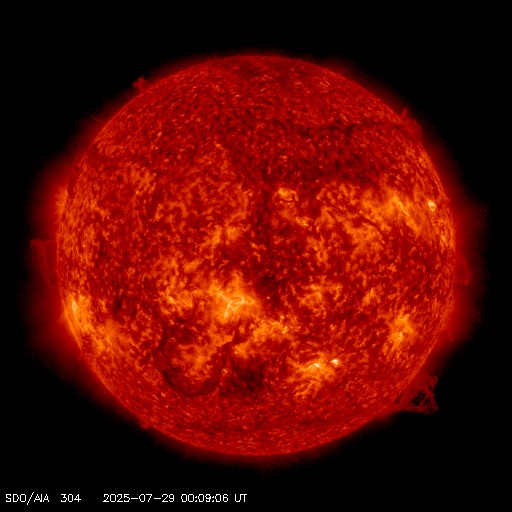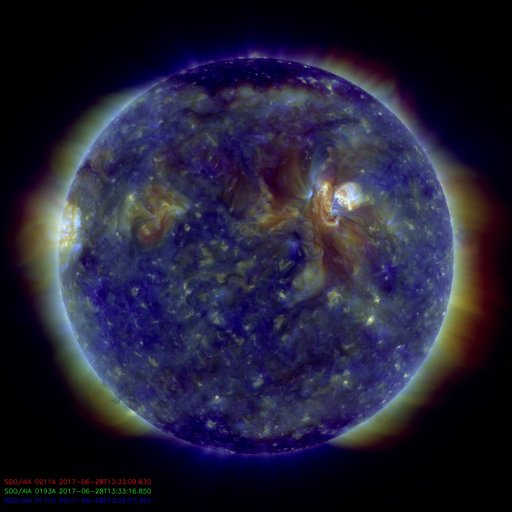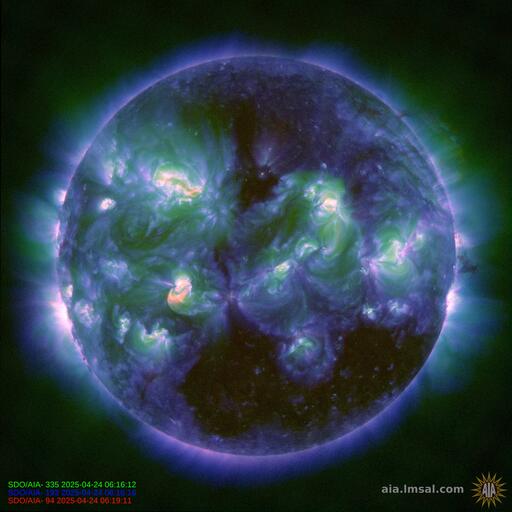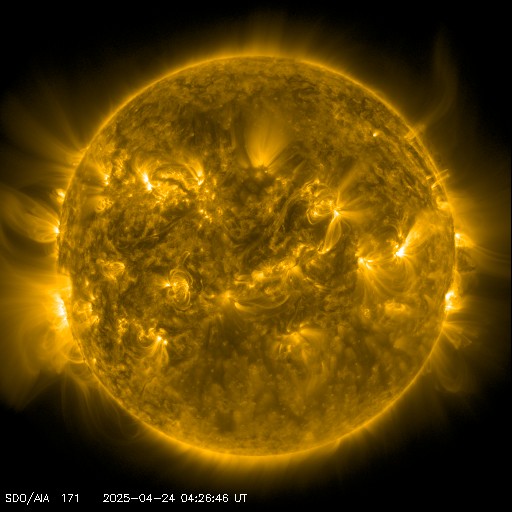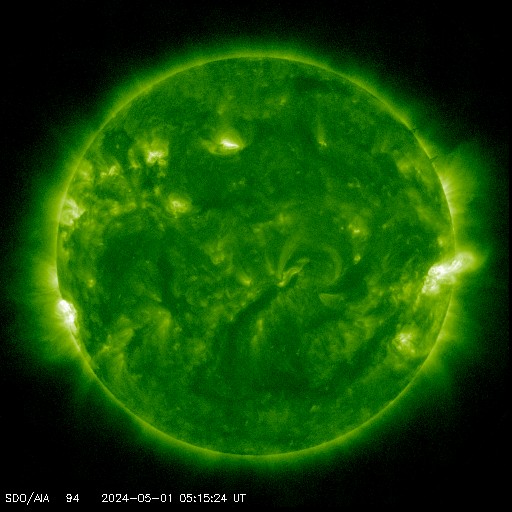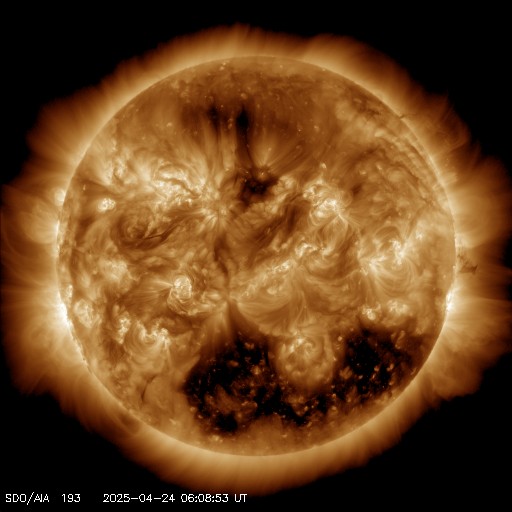Sunspot Region 1494 produced an M2.1 s/f peaking at 20:06 UTC on June 6, 2012. The SDO, Stereo, and SOHO spacecraft confirm a CME associated with this flare. Although a large portion of the ejecta from this CME was propelled south of the ecliptic, at this time it appears this CME will have a geomagnetic effect on Earth as it passes in 2-3 days.
Type II (est. speed 1148 km/s) and Type IV radio sweeps were also emitted with this flare.
In this image of the X-Flux we can see the M2.1 flare as it was recorded by the GOES Satellites.
In this STEREO Ahead C 2 image we clearly see the CME as it is ejected away from the solar disk. Notice that a large portion of the material is ejected south of the ecliptic away from Earth, but a clearly defined amount of material is also ejected in a full sweep.
In the video below created from SDO Composits of AIA 131, 211, and 335, you can watch this spectacular event unfold as Region 1494 (located south of the ecliptic just right to the center of the disk), unleashes this flare and CME in an Earthward direction.

